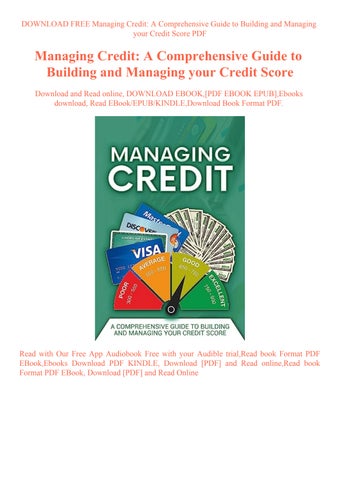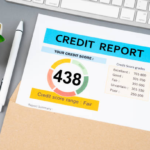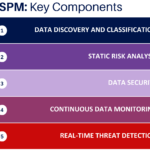If you’ve been hit with a County Court Judgment (CCJ), you’re not alone.
Many people find themselves in this situation due to various circumstances, from financial difficulties to unforeseen emergencies.
But what exactly does it mean, and how does it affect your ability to access credit?
A County Court Judgment (CCJ) is a court order that can be issued against you if you fail to repay money you owe.
It’s a serious mark on your credit history and can make it challenging to obtain credit in the future.
However, it’s essential to understand that having a CCJ doesn’t mean you’re stuck in financial hardship forever.

The Importance of Catalogue Credit
Catalogue credit can be a lifeline for those with CCJs.
It offers a way to spread the cost of essential items over time, making them more affordable.
But finding catalogue credit options when you have a CCJ on your record can seem daunting.
Don’t worry; we’re here to guide you through the process.
Catalogue credit allows you to purchase goods from a catalogue and pay for them in instalments.
It’s like having a personal shopping account, but with the flexibility to spread payments over weeks or months.
This can be particularly helpful if you need to replace essential household items or make purchases for special occasions but don’t have the funds upfront.
Understanding Catalogue Credit Options
What is Catalogue Credit?
Catalogue credit is a form of credit that allows you to buy goods from a catalogue and pay for them over time.
It’s similar to having a credit card but with specific limitations and benefits.
With catalogue credit, you’re typically given a credit limit, which is the maximum amount you can spend.
You can then choose items from the catalogue up to this limit and pay for them in instalments.
The catalogue will usually charge interest on any outstanding balance, so it’s essential to make your payments on time to avoid accruing additional charges.
Secured vs. Unsecured Catalogue Credit
Secured Catalogue Credit: Requires collateral, such as a deposit or guarantor, which can be challenging if you have a CCJ.
However, if you can provide security, you may be able to access higher credit limits or lower interest rates.
Unsecured Catalogue Credit: Doesn’t require collateral but may have higher interest rates due to the perceived risk.
This can be a viable option if you’re unable to provide security but still need access to catalogue credit.
Finding Catalogue Credit Despite CCJs
Researching Catalogues: Where to Start
When searching for catalogue credit options, focus on catalogues that are more lenient towards those with CCJs.
Look for companies that specialize in bad credit or offer flexible payment terms.
You can find these catalogues by searching online or asking for recommendations from friends or family members who may have been in a similar situation.
Before applying for catalogue credit, take the time to research different catalogues and compare their terms and conditions.
Pay close attention to factors such as interest rates, credit limits, and repayment options.
By doing your homework upfront, you can increase your chances of finding a catalogue that’s right for you.
Applying Wisely: Tips for Success
Check Your Credit Report: Before applying for catalogue credit, check your credit report to ensure all information is accurate.
If you find any errors, dispute them with the credit reporting agency to have them corrected.
This can help improve your credit score and increase your chances of being approved for catalogue credit.
Be Realistic: When applying for catalogue credit, be realistic about your chances of being approved.
Consider factors such as your credit history, income, and the severity of your CCJ. Applying for catalogues that are likely to accept your application can save you time and frustration.
Start Small: If you’re concerned about being approved for catalogue credit, consider starting with a catalogue that offers lower credit limits.
This can help you build trust with the catalogue company and demonstrate responsible borrowing behaviour.
Over time, as you prove yourself to be a reliable customer, you may be eligible for higher credit limits and better terms.
Making the Most of Catalogue Credit
Building Creditworthiness: A Long-Term Strategy
Catalogue credit isn’t just about buying things; it’s also an opportunity to improve your credit score over time.
By making timely payments and managing your credit responsibly, you can gradually rebuild your financial reputation.
This can open up doors to other forms of credit in the future, such as credit cards, loans, and mortgages.
To build creditworthiness with catalogue credit, focus on the following:
Pay on Time: Make your catalogue payments on time each month to avoid late fees and negative marks on your credit report.
Keep Balances Low: Try to keep your catalogue balances low relative to your credit limit. This can help improve your credit utilization ratio, which is an essential factor in determining your credit score.
Monitor Your Credit: Keep an eye on your credit report regularly to track your progress and catch any errors or discrepancies that may arise.
Budgeting for Success: Avoiding Pitfalls
While catalogue credit can be a useful tool, it’s essential to budget wisely to avoid falling into further financial difficulties.
Create a monthly budget that includes catalogue payments, ensuring you can afford them alongside other essential expenses.
If you find yourself struggling to keep up with payments, don’t hesitate to reach out to the catalogue company for assistance.
They may be able to offer solutions such as payment plans or hardship programmes to help you get back on track.

Conclusion: Empowering You for Financial Success
Having a CCJ doesn’t mean you’re destined to struggle with credit forever.
With the right knowledge and approach, you can find catalogue credit options that suit your needs and take steps towards a brighter financial future.
Remember, you’re not alone on this journey, and there are resources and support available to help you along the way.
Frequently Asked Questions
Can I get a mortgage with a CCJ?
Yes, it is possible to get a mortgage with a CCJ, but it depends on whether it’s satisfied or unsatisfied.
If it’s unsatisfied, you can negotiate the date it needs to be paid by and whether you can pay in installments.
After six years, all information on your CCJ will be removed from the register.
How can I improve my credit rating after a CCJ?
You can improve your credit rating after a CCJ by registering for the electoral roll, minimizing your number of credit applications, and keeping a regular check on your credit report to ensure all the details are correct.
How do mortgage lenders view applicants with CCJs?
Mortgage lenders have a limit on the amount of CCJ debt you can have and still qualify for a mortgage.
The amount of deposit you can put down will also impact whether a lender is likely to offer you a mortgage.
Lenders will have specific eligibility requirements for their CCJ products, but a mortgage broker can pair you with the best one based on your individual circumstances.
How can I access the best mortgage deals with a CCJ?
To access the best mortgage deals with a CCJ, it is wise to use the services of a specialist bad credit mortgage broker.
They will improve your chances of gaining access to the best deals available, as they have the flexibility to take your age, amount, and reason for the CCJ on board before making a final lending decision.
How long does a CCJ stay on my credit file?
A CCJ will stay on your credit file for six years.
After six years, all information on your CCJ will be removed from the register, regardless of whether it has been paid or not.





